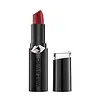What's inside
What's inside
 Key Ingredients
Key Ingredients

 Benefits
Benefits

 Concerns
Concerns

 Ingredients Side-by-side
Ingredients Side-by-side

Pentaerythrityl Tetraisostearate
EmollientIsononyl Isononanoate
EmollientOzokerite
Emulsion StabilisingKaolin
AbrasiveTriethylhexanoin
MaskingHydrogenated Microcrystalline Wax
Emulsion StabilisingSynthetic Wax
AbrasiveSilica
AbrasiveOleic/Linoleic/Linolenic Polyglycerides
EmollientMethyl Methacrylate Crosspolymer
Hdi/Trimethylol Hexyllactone Crosspolymer
Bis-Behenyl/Isostearyl/Phytosteryl Dimer Dilinoleyl Dimer Dilinoleate
EmollientCaprylic/Capric Triglyceride
MaskingHydrogenated Vegetable Oil
EmollientTrimethylpentanediol/Adipic Acid/Glycerin Crosspolymer
Skin ConditioningHydrogenated Styrene/Methylstyrene/Indene Copolymer
Dimethicone/Vinyl Dimethicone Crosspolymer
Skin ConditioningDipentaerythrityl Hexa C5-9 Acid Esters
Skin ConditioningMyristyl Lactate
EmollientBis-Diglyceryl Polyacyladipate-2
EmollientTriheptanoin
Skin ConditioningPhytosteryl Macadamiate
Skin ConditioningHelianthus Annuus Seed Oil
EmollientTocopheryl Acetate
AntioxidantPrunus Amygdalus Dulcis Oil
Skin ConditioningPhenoxyethanol
PreservativeSorbic Acid
PreservativeAstrocaryum Murumuru Seed Butter
EmollientPassiflora Edulis Seed Oil
EmollientPhytosteryl Oleate
Skin ConditioningTocopherol
AntioxidantArgania Spinosa Kernel Oil
EmollientMacadamia Integrifolia Seed Oil
Skin ConditioningEthylhexylglycerin
Skin ConditioningCocos Nucifera Oil
MaskingGlyceryl Caprylate
EmollientWater
Skin ConditioningGlycine Soja Oil
EmollientPentaerythrityl Tetra-Di-T-Butyl Hydroxyhydrocinnamate
AntioxidantSodium Hyaluronate
HumectantCI 42090
Cosmetic ColorantCI 77491
Cosmetic ColorantCI 77492
Cosmetic ColorantCI 77499
Cosmetic ColorantCI 45410
Cosmetic ColorantCI 15850
Cosmetic ColorantCI 77891
Cosmetic ColorantCI 19140
Cosmetic ColorantCI 15985
Cosmetic ColorantPentaerythrityl Tetraisostearate, Isononyl Isononanoate, Ozokerite, Kaolin, Triethylhexanoin, Hydrogenated Microcrystalline Wax, Synthetic Wax, Silica, Oleic/Linoleic/Linolenic Polyglycerides, Methyl Methacrylate Crosspolymer, Hdi/Trimethylol Hexyllactone Crosspolymer, Bis-Behenyl/Isostearyl/Phytosteryl Dimer Dilinoleyl Dimer Dilinoleate, Caprylic/Capric Triglyceride, Hydrogenated Vegetable Oil, Trimethylpentanediol/Adipic Acid/Glycerin Crosspolymer, Hydrogenated Styrene/Methylstyrene/Indene Copolymer, Dimethicone/Vinyl Dimethicone Crosspolymer, Dipentaerythrityl Hexa C5-9 Acid Esters, Myristyl Lactate, Bis-Diglyceryl Polyacyladipate-2, Triheptanoin, Phytosteryl Macadamiate, Helianthus Annuus Seed Oil, Tocopheryl Acetate, Prunus Amygdalus Dulcis Oil, Phenoxyethanol, Sorbic Acid, Astrocaryum Murumuru Seed Butter, Passiflora Edulis Seed Oil, Phytosteryl Oleate, Tocopherol, Argania Spinosa Kernel Oil, Macadamia Integrifolia Seed Oil, Ethylhexylglycerin, Cocos Nucifera Oil, Glyceryl Caprylate, Water, Glycine Soja Oil, Pentaerythrityl Tetra-Di-T-Butyl Hydroxyhydrocinnamate, Sodium Hyaluronate, CI 42090, CI 77491, CI 77492, CI 77499, CI 45410, CI 15850, CI 77891, CI 19140, CI 15985
Polybutene
Diisostearyl Malate
EmollientHydrogenated Polyisobutene
EmollientDiphenylsiloxy Phenyl Trimethicone
Skin ConditioningBis-Diglyceryl Polyacyladipate-2
EmollientOctyldodecyl Neopentanoate
EmollientHydrogenated Polydecene
EmollientDiisopropyl Dimer Dilinoleate
EmollientC10-30 Cholesterol/Lanosterol Esters
EmulsifyingOzokerite
Emulsion StabilisingPolyethylene
AbrasiveSynthetic Wax
AbrasiveSilica Silylate
EmollientMica
Cosmetic ColorantAloe Barbadensis Leaf Extract
EmollientSodium Hyaluronate
HumectantQuartz
AbrasiveBHT
AntioxidantButylene Glycol
HumectantCaprylyl Glycol
EmollientEthylhexyl Palmitate
EmollientHexylene Glycol
EmulsifyingPentaerythrityl Tetraethylhexanoate
EmollientSilica Dimethyl Silylate
EmollientParfum
MaskingPhenoxyethanol
PreservativePolybutene, Diisostearyl Malate, Hydrogenated Polyisobutene, Diphenylsiloxy Phenyl Trimethicone, Bis-Diglyceryl Polyacyladipate-2, Octyldodecyl Neopentanoate, Hydrogenated Polydecene, Diisopropyl Dimer Dilinoleate, C10-30 Cholesterol/Lanosterol Esters, Ozokerite, Polyethylene, Synthetic Wax, Silica Silylate, Mica, Aloe Barbadensis Leaf Extract, Sodium Hyaluronate, Quartz, BHT, Butylene Glycol, Caprylyl Glycol, Ethylhexyl Palmitate, Hexylene Glycol, Pentaerythrityl Tetraethylhexanoate, Silica Dimethyl Silylate, Parfum, Phenoxyethanol
Ingredients Explained
These ingredients are found in both products.
Ingredients higher up in an ingredient list are typically present in a larger amount.
This ingredient is lipid-based synthetic skin-conditioning agent derived from adipic acid and a mixture of fatty acids. It is often called a lanolin substitute.
As an emollient, it helps soften and hydrate the skin. Emollients create a barrier on the skin to trap moisture in.
Due to its fatty acid base, it may not be Malassezia folliculitis safe.
Learn more about Bis-Diglyceryl Polyacyladipate-2Ozokerite is a naturally occuring mineral wax. In cosmetics, ozokerite is used as a texture enhancer.
Ceresin wax is derived from this ingredient.
The melting point of ozokerite is 58-100 C.
Ozokerite is found all over the world including Scotland, the US, and India.
Learn more about OzokeritePhenoxyethanol is a preservative that has germicide, antimicrobial, and aromatic properties. Studies show that phenoxyethanol can prevent microbial growth. By itself, it has a scent that is similar to that of a rose.
It's often used in formulations along with Caprylyl Glycol to preserve the shelf life of products.
Sodium Hyaluronate is hyaluronic acid's salt form. It is commonly derived from the sodium salt of hyaluronic acid.
Like hyaluronic acid, it is great at holding water and acts as a humectant. This makes it a great skin hydrating ingredient.
Sodium Hyaluronate is naturally occurring in our bodies and is mostly found in eye fluid and joints.
These are some other common types of Hyaluronic Acid:
Learn more about Sodium HyaluronateSynthetic Wax is created from fossil fuels such as natural gas. It is used to enhance texture, adjust pH, and as an occlusive.
It may also be used as an abrasive ingredient to exfoliate the skin.
Synthetic Wax may not be fungal acne safe.
Learn more about Synthetic Wax